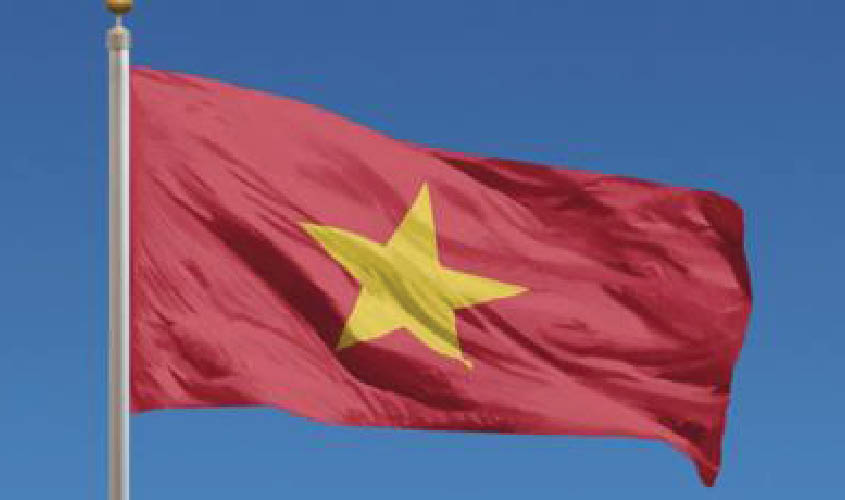It has not gone for massive testing but has controlled infected people, implemented contact tracing.
As of April 27, 2020, Vietnam has 270 positive cases of Covid-19, with no deaths and 222 have been successfully treated. However, compared to South Korea, New Zealand, and Finland, fewer articles in the international media mention Vietnam as a Covid-19 success story, even though the population of Vietnam is 95.54 million, more than the combined populations of these three countries.
This is understandable because South Korea, New Zealand and Finland have long been known for their advanced healthcare systems, including the ability to handle infectious diseases. Another critical part of the story is financial capability. According to the World Health Organization, South Korea spends 8.1% of its GDP on healthcare, whereas for Vietnam it is 5.6%. A well-known fact is that to be able to conduct massive testing for Covid-19, one has to be extremely robust in terms of resources, particularly financial and technological.
This has meant that Vietnam did not choose and cannot afford of the sort of approach taken by South Korea or Germany (which addresses Covid-19 more efficiently than other EU member countries), partly thanks to a more advanced healthcare system and bigger expenditure.
So what went into Vietnam’s accomplishment in handling the crisis? Success is often the outcome of a confluence of different factors. One thing, however, stands out in the case of Vietnam. The model it employs is “low-cost”, as John Reed put it in a recent article in the Financial Times. Vietnam has not opted for massive testing but rather controlled infected people and implemented contact tracing with possible infected ones. Using digital tools such as Bluezone, which is an open-source mobile app, healthcare officials in Vietnam can easily locate and manage potential risks.
That model is coupled with two other lesser-known truths as far as the healthcare system in Vietnam is concerned. One is the country’s long-held belief and holistic investment in preventive medicine. In the public sphere in Vietnam, the motto “prevention is better than cure” is ubiquitous. In fact, Vietnam is running two systems in parallel, prevention and treatment in all the provinces and localities. The overall approach is universal healthcare. Vietnamese children all take vaccines of different types.
The other is the creditable medical corps of Vietnam, both at the academic and practical levels. For instance, the Center for Health System Research under Hanoi Medical University ranks 23rd in the world in the category of top domestic health affairs think tanks, according to Global Go to Think Tank Index Report 2019 by the University of Pennsylvania. In terms of practice, the established evidence is Vietnamese doctors have a lot of opportunities to apply what they learn to real life situations due to a large number of patients admitted to hospitals. A score of doctors from Indonesia, Malaysia, the Philippines, and Japan choose Vietnamese hospitals to hone their skills. On another note, made-in-Vietnam Covid-19 test kits have been recognised by the Emergency Use Listing procedure (EUL) of the World Health Organization (WHO) and meet EU standards.
The overall efforts of the country in the fight against Covid-19 have won praise from the WHO. Takeshi Kasai, WHO Regional Director for the Western Pacific, was quoted as saying Vietnam was staying on top of its coronavirus infections as a result of strong leadership by the government and cooperation among its people.
The Vietnamese government, in fact, has no intention to tout its success, which it calls “initial” with a caution—“graver dangers are still lurking ahead”. Its model is not for export either, but for domestic consumption. Two top priorities are people’s health and safety, and maintenance of economic dynamism. The first priority, as stated by Prime Minister Nguyen Xuan Phuc, is the foundation for everything. And the second priority is to make sure that resources are sustainable. Viewed from Hanoi, with a growth rate of 7.02% in 2019, policymakers would want to keep the engine rolling at a time when the nation is trying to move beyond the middle-income trap. But first things first, Covid-19 presents a novel test and economic development can be achieved only if that health challenge is met.
Alongside the domestic focus, Vietnamese diplomacy also reaches out to the world, again, not for fame or polishing its image. A recent guiding principle in Vietnam’s foreign policy is for the country to be a “responsible member of the international community”. In this highly interconnected world, giving is, under many circumstances, as important as taking. That’s why Vietnam gives masks to India, China, the United States, EU, Japan, and neighbouring countries. Vietnam has also proven itself a serious member of many regional and international institutions, both in times of peace and crisis. As the chair of ASEAN this year, Vietnam quickly summoned meetings to discuss and coordinate actions on Covid-19. Another example is a US$50,000 donation to the World Health Organization.
A more proactive Vietnam in the international arena may fit the paradigm of an emerging middle power as laid out by the Lowy Institute of Australia. Countries situated between major powers and small powers and supporting multi-lateralism in terms of both rule taking and rule making could be categorised as middle powers. Vietnam does not label itself as such in the official narrative, but rather from a research perspective, knowing what a country can do and should do is helpful for repositioning. The case of Covid-19 gives a powerful example in this regard.
Vietnam may find a lot of this resonance in India, a bigger country, but sharing much of the thinking of engaging more actively and responsibly with the world as strategic partners.
Le Dinh Tinh, PhD, is Director General of the Institute for Foreign Policy and Strategic Studies, Hanoi, Vietnam.

